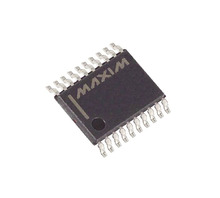Manufacturer Part Number
MAX1281BEUP+T
Manufacturer
Analog Devices
Introduction
High-performance, low-power 12-bit SAR ADC with SPI interface
Product Features and Performance
12-bit resolution
300k samples per second
4 to 8 pseudo-differential or single-ended inputs
SPI data interface for easy integration
Multiplexer with sample-and-hold circuit (MUX-S/H-ADC)
1:1 sample-and-hold to ADC ratio
Single ADC converter with successive approximation register (SAR) architecture
Can operate with both an external or internal reference
Analog supply voltage range from 2.7V to 3.6V
Digital supply voltage range from 2.7V to 3.6V
Operating temperature range from -40°C to 85°C
Product Advantages
High-speed data acquisition capability
Flexibility in input configurations
Ease of interfacing with microcontrollers or DSPs
High precision with SAR architecture
Dual supply voltage compatibility
Key Technical Parameters
Number of Bits: 12
Sampling Rate: 300kSPS
Number of Inputs: 4 to 8
Input Type: Pseudo-Differential, Single Ended
Data Interface: SPI
SAR Architecture
External/Internal Reference
Quality and Safety Features
Wide operating temperature range for reliability in various environments
Compatibility
SPI interface compatible with most MCUs and DSPs
20-TSSOP package suitable for standard surface mount technology
Supports both analog and digital supply voltage ranges for diverse applications
Application Areas
Data acquisition systems
Instrumentation and control
Medical devices
Communication systems
Product Lifecycle
Active product status
Ongoing support and availability from Analog Devices
Key Reasons to Choose This Product
High-speed simultaneous sampling suits real-time applications
Versatile input configuration assisting a range of signal types
SPI interface ensures easy and rapid data transfer
Low power consumption combined with high precision delivers efficient performance
TSSOP-20 package is convenient for compact PCB design
SAR ADC architecture known for fast data acquisition with high accuracy
Good thermal performance extending operational longevity





 MAX1281BCUP+Maxim
MAX1281BCUP+Maxim MAX127BEAI+Analog Devices Inc./Maxim IntegratedIC DAS/ADC 12BIT 8K 28SSOP
MAX127BEAI+Analog Devices Inc./Maxim IntegratedIC DAS/ADC 12BIT 8K 28SSOP